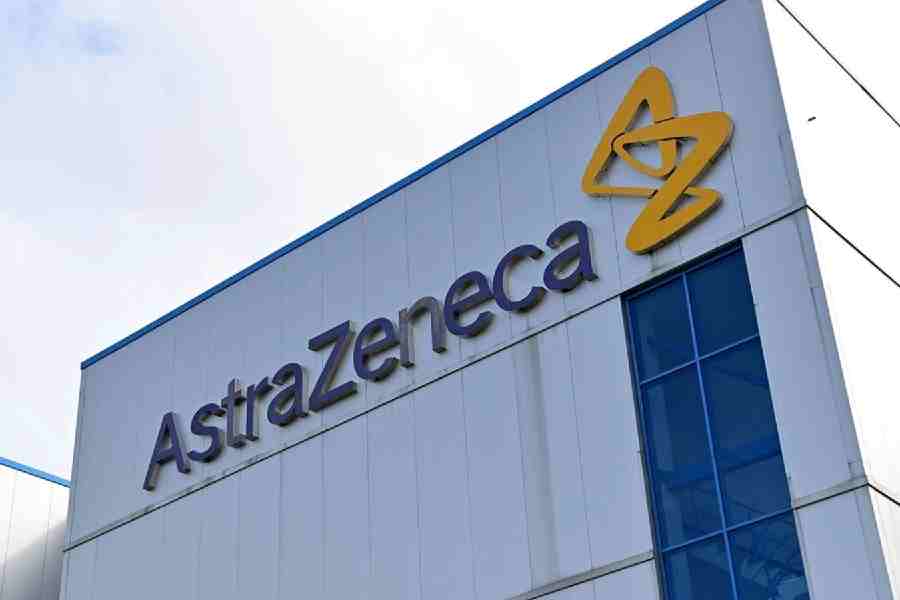AstraZeneca’s Strategic Investment in U.S. Manufacturing and its Alignment with Sustainable Development Goals
Investment Overview and Scope
AstraZeneca has announced a landmark commitment to invest $50 billion in its United States manufacturing capabilities by 2030. This initiative is part of a broader industry trend that has seen pharmaceutical companies collectively pledge over $200 billion for domestic manufacturing expansion. The investment is designed to bolster the company’s production infrastructure and directly support key United Nations Sustainable Development Goals (SDGs).
- Facility Expansion: The investment includes significant upgrades and expansions of current AstraZeneca sites in Maryland and Massachusetts.
- New State-of-the-Art Center: A cornerstone of the plan is the construction of a new multi-billion dollar manufacturing facility in Virginia.
- Strategic Production Focus: The new center will specialize in producing drug substances for the company’s innovative weight management and metabolic portfolio, including oral GLP-1s, peptides, and oligonucleotides.
Contribution to SDG 3: Good Health and Well-being
This strategic investment directly advances several targets within SDG 3 by enhancing the production and accessibility of critical medicines.
- Addressing Non-Communicable Diseases (Target 3.4): The focus on manufacturing treatments for cardio-metabolic diseases targets a primary global health challenge, contributing to the reduction of premature mortality from non-communicable diseases.
- Enhancing Access to Medicines (Target 3.8): By prioritizing the development of oral GLP-1 medications, AstraZeneca aims to provide treatments that are more affordable, accessible, and easier for patients to use, thereby supporting the goal of universal health coverage.
- Strengthening Health Supply Chains: Localizing the production of essential medicines strengthens the resilience of the U.S. health system, ensuring a more stable and reliable supply of innovative treatments.
Impact on SDG 8: Decent Work and Economic Growth
The $50 billion investment serves as a significant driver for sustainable economic growth and the creation of high-quality employment, in line with the objectives of SDG 8.
- Job Creation: The construction of a new facility and the expansion of existing sites are expected to generate substantial, high-value employment opportunities in multiple states.
- Economic Diversification and Productivity (Target 8.2): The development of advanced, state-of-the-art manufacturing centers promotes economic diversification and technological upgrading, fostering higher levels of economic productivity.
Advancing SDG 9: Industry, Innovation, and Infrastructure
AstraZeneca’s commitment represents a major contribution to building resilient infrastructure, promoting inclusive and sustainable industrialization, and fostering innovation, which are core tenets of SDG 9.
- Building Resilient Infrastructure (Target 9.1): The investment in new and upgraded facilities constitutes a significant enhancement of the nation’s critical pharmaceutical manufacturing infrastructure.
- Fostering Innovation (Target 9.5): The new facility is purpose-built to produce next-generation medicines, positioning it at the forefront of scientific and technological innovation within the pharmaceutical industry.
- Supporting Domestic Industrialization (Target 9.B): The onshoring of manufacturing capabilities strengthens domestic industrial capacity, reduces reliance on foreign supply chains, and supports a robust national industrial base.
Broader Industry Context and Policy Implications
The investment occurs within a complex policy environment, highlighting the interplay between corporate strategy, economic incentives, and global trade dynamics, which relates to SDG 17 (Partnerships for the Goals).
- Response to Economic Policy: The industry-wide trend of onshoring manufacturing is influenced by U.S. tax and economic incentives, as well as a strategy to mitigate risks associated with potential tariffs on imported drug components.
- Public-Private Dialogue: The actions of AstraZeneca, Johnson & Johnson, and Eli Lilly reflect an ongoing dialogue between the pharmaceutical sector and government bodies to ensure a stable policy environment that supports long-term investment in domestic health security and industrial capacity.
Analysis of Sustainable Development Goals (SDGs) in the Article
1. Which SDGs are addressed or connected to the issues highlighted in the article?
-
SDG 3: Good Health and Well-being
The article directly relates to SDG 3 as it discusses AstraZeneca’s investment in manufacturing facilities to produce medicines. Specifically, it mentions the production of drugs for “weight management and metabolic portfolio,” which are treatments for non-communicable diseases (NCDs). The CEO’s statement about making drugs “cheaper, more accessible” and available for export also aligns with the goal of ensuring healthy lives and promoting well-being for all.
-
SDG 8: Decent Work and Economic Growth
The announcement of a $50 billion investment in US manufacturing is a significant economic activity. This investment contributes to economic growth, and the construction and operation of new facilities will create jobs, thereby supporting the principles of SDG 8.
-
SDG 9: Industry, Innovation, and Infrastructure
This goal is central to the article. The investment is explicitly for building and expanding manufacturing infrastructure, including a “new state-of-the-art centre.” This commitment to building resilient infrastructure and fostering innovation within the pharmaceutical industry is a direct link to SDG 9.
-
SDG 17: Partnerships for the Goals
The article discusses the investment in the context of international trade policies, specifically the threat of tariffs on imported drug components. The dynamic between the UK-based company (AstraZeneca), the US government’s “reshoring agenda,” and the potential for tariffs highlights the importance of trade policies and global economic partnerships, which are key components of SDG 17.
2. What specific targets under those SDGs can be identified based on the article’s content?
-
Target 3.4: By 2030, reduce by one-third premature mortality from non-communicable diseases through prevention and treatment and promote mental health and well-being.
- The article states the new facility will produce drugs for the company’s “innovative weight management and metabolic portfolio.” These are treatments for non-communicable diseases like obesity and diabetes, directly contributing to the “treatment” aspect of this target.
-
Target 3.b: Support the research and development of vaccines and medicines for the communicable and non-communicable diseases that primarily affect developing countries, provide access to affordable essential medicines and vaccines…
- AstraZeneca’s CEO, Pascal Soriot, is quoted saying, “we think they are going to be easier for patients because they will be cheaper, more accessible, and we’ll be able to export them around the world.” This statement directly addresses the goal of providing access to affordable and accessible medicines globally.
-
Target 9.2: Promote inclusive and sustainable industrialization and, by 2030, significantly raise industry’s share of employment and gross domestic product, in line with national circumstances, and double its share in least developed countries.
- The article details a “$50 billion” investment in US manufacturing. This massive capital injection into the pharmaceutical industry will significantly raise the industry’s contribution to the US gross domestic product (GDP).
-
Target 9.b: Support domestic technology development, research and innovation…
- The investment is aimed at building a “new state-of-the-art centre” to produce “innovative” drugs. This supports domestic (US-based) technology and innovation in the high-tech pharmaceutical sector, a key element of this target.
-
Target 17.10: Promote a universal, rules-based, open, non-discriminatory and equitable multilateral trading system…
- The article highlights the industry’s response to the threat of trade barriers. It mentions that the investment strategy is being deployed to “curry favor with President Donald Trump and his reshoring agenda” and to avoid “strict tariffs on imported drug components.” This directly relates to the challenges and dynamics of the global trading system.
3. Are there any indicators mentioned or implied in the article that can be used to measure progress towards the identified targets?
- Total investment in pharmaceutical manufacturing: The article explicitly states the investment amount is “$50 billion” from AstraZeneca, with a combined total of “more than $200 billion” from peer companies. This is a direct quantitative indicator of investment in health and industrial infrastructure (Targets 3.b, 9.2).
- Availability of medicines for non-communicable diseases: The article implies an increase in the availability of these medicines by stating the new facility will “produce drug substances for the Company’s innovative weight management and metabolic portfolio.” This serves as a qualitative indicator for Target 3.4.
- Affordability and accessibility of medicines: This is implied in the CEO’s statement that the new oral GLP-1 pills “will be cheaper, more accessible.” This can be used as a qualitative indicator for progress towards Target 3.b.
- Investment in high-tech industrial infrastructure: The description of the new facility as a “state-of-the-art centre” that will produce “small molecules, peptides and oligonucleotides” indicates an investment in high-technology manufacturing, which is an indicator for Target 9.b.
- Implementation of trade tariffs: The article explicitly mentions the threat of tariffs, stating, “Trump has promised the pharma industry will face tariffs starting Aug. 1.” The existence or absence of such tariffs is a direct indicator related to the health of the multilateral trading system (Target 17.10).
4. Table of SDGs, Targets, and Indicators
| SDGs | Targets | Indicators |
|---|---|---|
| SDG 3: Good Health and Well-being | 3.4: Reduce premature mortality from non-communicable diseases (NCDs) through treatment.
3.b: Provide access to affordable essential medicines. |
Increased production and availability of medicines for weight management and metabolic diseases.
Commitment to making medicines “cheaper” and “more accessible.” |
| SDG 8: Decent Work and Economic Growth | 8.2: Achieve higher levels of economic productivity through technological upgrading and innovation. | $50 billion investment in a high-value manufacturing sector. |
| SDG 9: Industry, Innovation, and Infrastructure | 9.2: Promote inclusive and sustainable industrialization and raise industry’s share of GDP.
9.b: Support domestic technology development, research and innovation. |
$50 billion investment in US manufacturing infrastructure.
Construction of a “new state-of-the-art centre” for producing innovative drugs. |
| SDG 17: Partnerships for the Goals | 17.10: Promote a universal, rules-based, open, non-discriminatory and equitable multilateral trading system. | The threat and potential implementation of tariffs on imported drug components, influencing corporate investment decisions. |
Source: finance.yahoo.com







